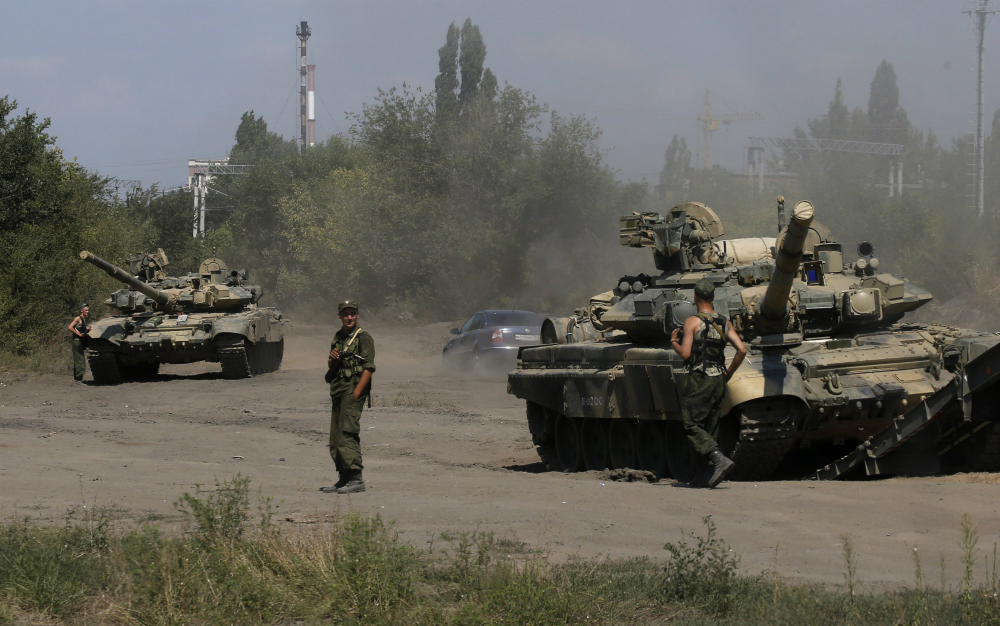
Advertisement
Thought exercises were conducted by Deputy Assistant Secretary of Defense for force development David Ochmanek and one of his colleagues at Rand. These thought exercises were designed to determine the outcome of a U.S. shooting war in the Baltics should something go “horribly” wrong.
The results were not promising.
Here is the summary of the exercises as reported by the Foreign Policy:
In June 2014, a month after he had left his force-planning job at the Pentagon, the Air Force asked David Ochmanek – deputy assistant secretary of defense for force development – for advice on Russia’s neighborhood ahead of Obama’s September visit to Tallinn, Estonia. At the same time, the Army had approached another of Ochmanek’s colleagues at Rand, and the two teamed up to run a thought exercise called a “table top,” a sort of war game between two teams: the red team (Russia) and the blue team (NATO). The scenario was similar to the one that played out in Crimea and eastern Ukraine: increasing Russian political pressure on Estonia and Latvia (two NATO countries that share borders with Russia and have sizable Russian-speaking minorities), followed by the appearance of provocateurs, demonstrations, and the seizure of government buildings. “Our question was: Would NATO be able to defend those countries?” Ochmanek recalls.
The results were dispiriting. Given the recent reductions in the defense budgets of NATO member countries and American pullback from the region, Ochmanek says the blue team was outnumbered 2-to-1 in terms of manpower, even if all the U.S. and NATO troops stationed in Europe were dispatched to the Baltics — including the 82nd Airborne, which is supposed to be ready to go on 24 hours’ notice and is based at Fort Bragg, North Carolina.

What is wrong with the picture? Shouldn’t the U.S. have the advantage, considering it has more sophisticated “toys?”
In terms of technology, yes.
But when you consider conventional warfare and include actual numbers in the picture, Russia’s army will “annihilate” their opponents in a Baltic clash.
Politico adds more:
For those villagers eagerly snapping pictures on the side of a road in the Czech Republic in late September, the appearance of the line of U.S. “Stryker” armored fighting vehicles must have seemed more like a parade than a large-scale military operation. The movement of some 500-plus soldiers of the 2nd Cavalry Regiment from Vilsack in Bavaria to a Hungarian military base was intended to strengthen U.S. ties with the Czech, Slovak and Hungarian militaries and put Russia’s Vladimir Putin on notice.
But not everyone is convinced. “This Stryker parade won’t fool anyone in Moscow,” says retired Army Colonel Douglas Macgregor. “The Russians don’t do many things well, but they have been subverting, destabilizing, invading and conquering their neighbors since Peter the Great. And what’s our response: a small unit of light armored trucks.”
Viewed by many of his colleagues as one of the most innovative Army officers of his generation, Macgregor, a West Point graduate with a Ph.D. in international relations (“he can be pretty gruff,” a fellow West Point graduate says, “but he’s brilliant”), led the 2nd Cav’s “Cougar Squadron” in the best-known battle of Operation Desert Storm in February 1991. In 23 minutes, Macgregor’s force destroyed an entire Iraqi Armored Brigade (including nearly 70 Iraqi armored vehicles), while suffering a single American casualty. Speaking at a military “lessons learned” conference one year later, Air Force General Jack Welsh described the Battle of 73 Easting (named for a map coordinate) as “a stunning, overwhelming victory.”
In the wake of the battle, however, Macgregor calculated that if his unit had fought a highly trained and better armed enemy, like the Russians, the outcome would have been different.
In early September he circulated a PowerPoint presentation showing that in a head-to-head confrontation pitting the equivalent of a U.S. armored division against a likely Russian adversary, the U.S. division would be defeated.
“Defeated isn’t the right word,” Macgregor told me last week. “The right word is annihilated.” The 21-slide presentation features four battle scenarios, all of them against a Russian adversary in the Baltics — what one currently serving war planner on the Joint Chiefs staff calls “the most likely warfighting scenario we will face outside of the Middle East.”
“Macgregor scares the hell out of the Army,” says a senior Joint Chiefs war planner. “What he has proposed is nothing less than the dismantling of the Big Green Machine, getting the Army to embrace a future of lighter, more agile forces than the big lumbering behemoth which takes forever to spool up and deploy. I’ll bet the armor and airborne guys are furious. Reform my ass: Macgregor has walked into the zoo and slapped the gorilla.”
Well, that was a scenario in the Baltics. Perhaps other methods, factors, and strategies will come in play in other scenarios. What do you think?
Sources:
Submit a correction >>
This article may contain statements that reflect the opinion of the author
Advertisement
Advertisements















